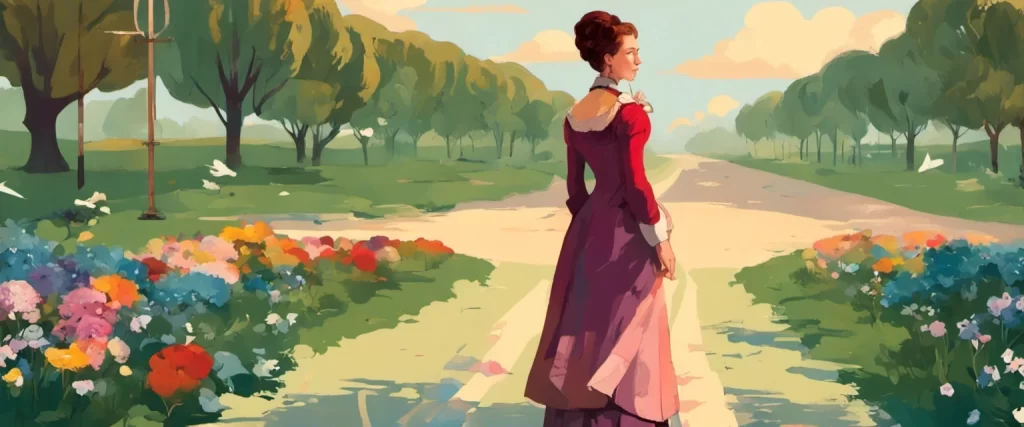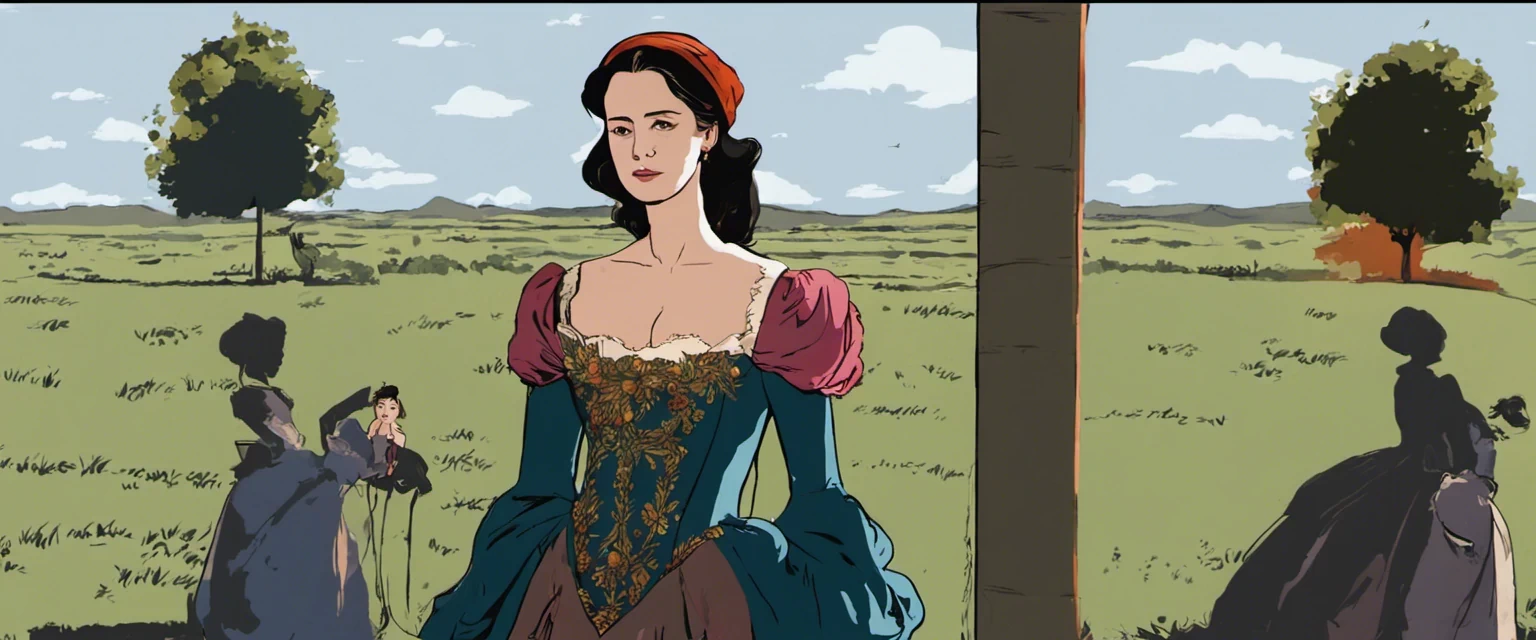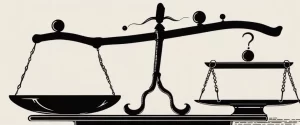—Madame Bovary & Anna Karenina
In the realm of classic literature, there exist countless tales that delve deep into the complexities of human nature, exploring themes of love, desire, and societal expectations. Two such remarkable novels that have captivated readers for generations are Gustave Flaubert’s “Madame Bovary” and Leo Tolstoy’s “Anna Karenina”. These masterpieces of 19th-century literature exemplify the intricacies of female protagonists who find themselves yearning for something more in their seemingly ordinary lives. While both Emma Bovary and Anna Karenina struggle against the oppressive constraints of their societies, their journeys towards self-fulfillment are distinct in their consequences and the ultimate fate that befalls each character. By undertaking a comparative analysis of these two exceptional works, this study aims to illuminate the shared themes of longing, disillusionment, and the search for true happiness, while delving into the unique narrative techniques employed by Flaubert and Tolstoy to portray their respective heroines. Through examining the similarities and disparities between “Madame Bovary” and “Anna Karenina”, we hope to gain a greater understanding of the human condition and the consequences of unfulfilled desires in two different cultural and historical contexts.
Brief Summary of Two Books
Madame Bovary by Gustave Flaubert
Madame Bovary is a novel by Gustave Flaubert that tells the story of Emma Bovary, a woman who is dissatisfied with her middle-class life and seeks escape through extramarital affairs and materialistic indulgence. Emma first marries Charles Bovary, a kind but boring country doctor, only to find herself disappointed and unsatisfied with their relationship. She then engages in several illicit affairs with men who excite her fantasies, but these encounters leave her feeling empty and unfulfilled. As Emma’s debts pile up and her affairs become more tangled, she spirals deeper into delusion and despair. The novel explores themes of love, passion, and the consequences of pursuing unattainable ideals, ultimately leading to a tragic ending.
Anna Karenina by Leo Tolstoy
“Anna Karenina” is a prominent novel by Leo Tolstoy set in 19th-century Russia. The story revolves around Anna Karenina, a married noblewoman who embarks on an affair with the charismatic Count Vronsky. As their love affair unfolds, it explores themes of love, passion, and societal expectations. Alongside Anna’s narrative, the book also follows numerous other characters and their interconnected lives, highlighting the contrasting experiences of various relationships, including the complicated marriage of Konstantin Levin and Kitty Shcherbatskaya. Tolstoy delves into the complexities of human emotions, the constraints of societal norms, and the consequences of one’s choices, ultimately offering a profound and tragic exploration of the human condition.
Comparison between Two Books

Similarities in adultery
Madame Bovary by Gustave Flaubert and Anna Karenina by Leo Tolstoy are both renowned works of literature that depict the theme of adultery. Despite being written in different time periods and cultural contexts, these novels draw interesting parallels when exploring the consequences and societal implications of extramarital affairs. Here are some similarities found in the portrayal of adultery in both Madame Bovary and Anna Karenina:
1. Unfulfilled marriages: In both novels, the main female protagonists, Emma Bovary and Anna Karenina, find themselves trapped in unhappy marriages. Their husbands, Charles Bovary and Alexei Karenin, fail to emotionally satisfy them, leaving them feeling lonely and seeking emotional and romantic connections elsewhere.
2. Excitement and escapism: Emma and Anna are drawn to their respective affairs as a means of escaping the monotony and dissatisfaction of their everyday lives. The excitement and passion they find in their affairs offer a temporary respite from their mundane marriages.
3. Search for love and fulfillment: Both Emma and Anna are driven by a desire for true love and fulfillment that they do not find within their marriages. They seek passionate and romantic relationships, hoping to find a deeper emotional connection that their husbands are unable to provide.
4. Social scrutiny and judgment: Adultery in both novels is met with severe societal condemnation. Emma and Anna face criticism, gossip, and ostracization when their affairs are exposed. The characters’ reputations and social standing are greatly affected by their actions, reflecting the moral and social norms of their respective societies.
5. Tragic consequences: Both novels demonstrate the devastating consequences of adultery. Emma’s affair leads to her descent into debt, disillusionment, and ultimately, her tragic downfall. Similarly, Anna’s affair leads to personal turmoil, societal rejection, and eventual tragedy. The repercussions of their choices highlight the destructive power of infidelity.
6. Inevitable destruction: Both Flaubert and Tolstoy’s narratives emphasize the inevitable destruction caused by adultery. The affairs, though initially exciting and liberating, ultimately lead to suffering and ruin. The characters are unable to escape the consequences of their actions, highlighting the destructive nature of crossing societal boundaries and betraying one’s marriage vows.
These similarities, present in both Madame Bovary and Anna Karenina, demonstrate the profound exploration of adultery as a theme in these two classic works. They offer a deep and insightful analysis of the complexities, consequences, and societal judgment faced by those who engage in extramarital affairs.
Divergences in adultery
Madame Bovary by Gustave Flaubert and Anna Karenina by Leo Tolstoy are two classic novels that explore the theme of adultery, but they take contrasting approaches in their portrayal of this forbidden love. While both novels depict women involved in extramarital affairs, the divergence lies in the authors’ perspectives on the consequences and societal judgment faced by the characters.
In Madame Bovary, Flaubert presents the story of Emma, a young, married woman who is dissatisfied with her provincial life and seeks passion outside of her marriage. Emma indulges in multiple affairs, driven by her pursuit of romanticized notions of love and her desire for a more fulfilling life. However, her infidelities lead to a downward spiral of debt, deception, and eventual tragedy. In this portrayal, Flaubert condemns Emma’s actions, illustrating the devastating consequences that adultery can have on individuals and their surrounding relationships.
On the other hand, Tolstoy’s Anna Karenina presents a more sympathetic view of adultery through the character of Anna. Anna, a woman trapped in a loveless marriage, embarks on a passionate affair with Count Vronsky. Tolstoy doesn’t solely focus on the potential sins or downfall of Anna’s actions but explores the complex emotions and societal pressures that drive her towards infidelity. The novel also delves into the hypocrisy of a society that harshly judges women while often tolerating men’s similar behavior. Tolstoy’s treatment of adultery reflects a more nuanced understanding of human desires and the societal influences that can lead to it, creating a more empathetic portrayal of Anna’s actions.
Furthermore, the consequences the characters face in each novel differ significantly. In Madame Bovary, Emma’s affairs lead to her financial ruin, worsening her dissatisfaction and ultimately driving her to suicide. Flaubert emphasizes the devastating consequences of adultery on both the individual and their family, portraying it as a destructive force that can irreversibly taint lives.
In contrast, Anna Karenina explores the societal consequences faced by Anna more extensively. Anna’s affair becomes a source of scandal and scrutiny within high society, leading to her social isolation and constant judgment. However, unlike Emma, Anna does not face financial ruin or meet a tragic end but rather continues to struggle with guilt, societal pressure, and her deteriorating mental state. Tolstoy delves deep into the emotional toll that society’s shunning and condemnation take on Anna, shedding light on the restrictive and oppressive nature of societal norms.
In conclusion, while Madame Bovary by Gustave Flaubert and Anna Karenina by Leo Tolstoy both deal with the theme of adultery, they diverge in their treatment of the subject. Flaubert condemns the actions of the adulterous character, emphasizing the devastating consequences of infidelity on both personal and familial aspects. In contrast, Tolstoy presents a more sympathetic perspective, delving into the emotional complexities and societal pressures faced by his adulteress. By exploring the consequences and societal judgment, these novels offer contrasting insights into the complexities of human desires and the impact of adultery on individuals and society.

Conclusion
Both “Madame Bovary” by Gustave Flaubert and “Anna Karenina” by Leo Tolstoy are highly regarded classics in the world of literature and have their own unique merits. Ultimately, the decision of which book is more worthy of reading will depend on personal preferences and interests.
“Madame Bovary” is a novel that explores the themes of love, desire, and the pursuit of idealized romanticism. Flaubert’s intricate writing style and attention to detail make the novel a masterful work of realist fiction. It delves into the character of Emma Bovary, a woman trapped in a conventional and unsatisfying marriage, as she seeks fulfillment through affairs and materialistic pursuits. “Madame Bovary” remains influential in its critique of bourgeois society and its examination of the consequences of romantic illusions.
On the other hand, “Anna Karenina” is an epic novel that delves into the complex worlds of love, family, and social conventions. Tolstoy’s writing style is rich and expansive, offering vivid portrayals of 19th-century Russia. The story follows the titular character, Anna Karenina, as she embarks on an adulterous affair that leads to destructive consequences. Alongside Anna’s narrative, Tolstoy weaves in other compelling storylines that explore themes such as rural life, marriage, and spirituality. “Anna Karenina” is often praised for its insightful examination of human nature and its profound observations on the societal norms of the time.
While both “Madame Bovary” and “Madame Curie” share the title “Madame,” they represent vastly different narratives and contexts. Flaubert’s novel focuses on fictional characters grappling with personal dissatisfaction and societal constraints, while Marie Curie’s life story showcases a real-life trailblazer in the field of science who defied conventions and made significant contributions to humanity’s understanding of the physical world.
In the end, both novels are highly introspective and thought-provoking, but the choice between them depends on one’s personal taste. If one is drawn to realistic examinations of societal expectations and the consequences of unmet desires, “Madame Bovary” may be the more fitting choice. Alternatively, if one is captivated by sweeping narratives that explore the complexities of human relationships and moral dilemmas within a larger historical and societal context, “Anna Karenina” may offer a more rewarding reading experience. Ultimately, both books hold immense literary value and have contributed significantly to the canon of world literature.



